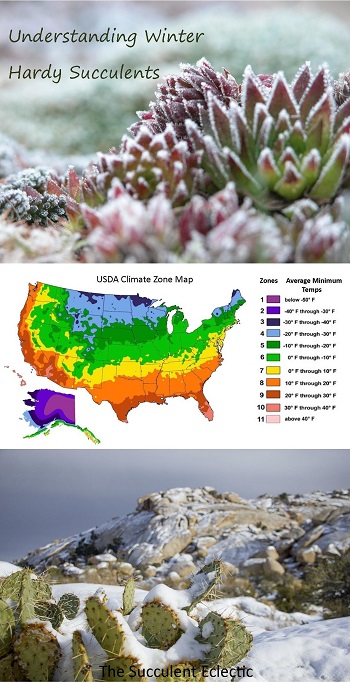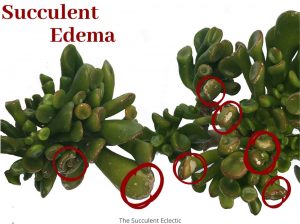As you race to bring your precious succulents indoors before the temperature drops too low, don’t you sometimes wish there were succulents that could shrug off winter’s chill? The good news is, there are! Some winter hardy succulents thrive outdoors year-round where it snows and sleets and drops well below zero! The less good news is that you didn’t plant them six months ago. But there is always next year to plan for! Let’s take a good look at winter succulents, and how to choose them for your garden.
Succulents in Cold Climates
In this Post We'll Cover:
{Please note, some links in this post may be affiliate links to sites that pay me a small commission if you click on the link and make a purchase. This commission is at absolutely no cost to you. I only recommend products and companies that I have worked with and truly love! ~Kat}
What are Winter Succulents?
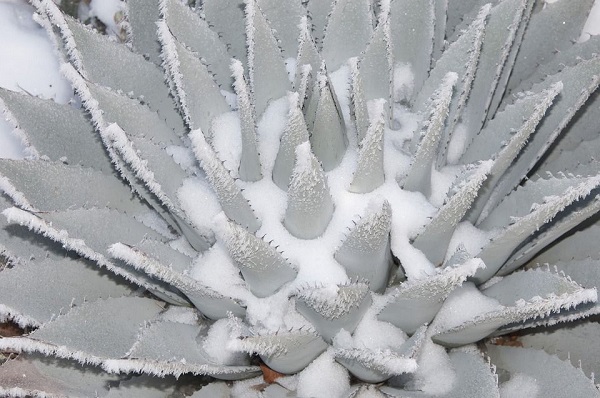
We all know that water expands when it freezes. This is why ice floats, and why fish and animals can live in a frozen lake or the arctic sea. But have you ever wondered why the water inside a plant doesn’t freeze, expand and rip right through the cell walls to kill the plant? The short answer is, it often does. This is how plants that cannot tolerate freezing temps die. Winter succulents and all plants that do survive freezing weather form a type of anti-freeze protein that prevents the water in their cells from crystallizing when they are exposed to cold temperatures. The better the plant is at producing these cryoprotectantsCryoprotectants (Kri-oh-pro-TECK-tants) are specialized prot... More, the colder the temperatures it can tolerate.
Many succulents die if they are exposed to a frost. They are referred to as being tender to frost. But some succulents are native to climates that routinely drop well below freezing. These plants gradually build up cryoprotectants as the weather cools from summer to winter. The varieties that survive severe cold without protection or intervention from a gardener are considered winter hardy succulents, or sometimes just winter succulents.
There are many degrees of winter hardiness. Some plants will tolerate only an occasional brief dip below freezing. Others will thrive despite extended periods below 0°F (-18°C). How much winter chill a plant can survive will determine its cold hardiness rating. A winter succulent’s cold hardiness ratings are described in reference to a climate zone. USDA climate zones are determined by the average coldest winter temperature typically experienced within a geographical area. When you know what climate zone you are gardening in, it will help you to determine which plants will survive a typical winter in your garden. If you are in the U.S. and don’t know your climate zone, type your zip code in at this USDA website here.
Using USDA Climate Zone Charts
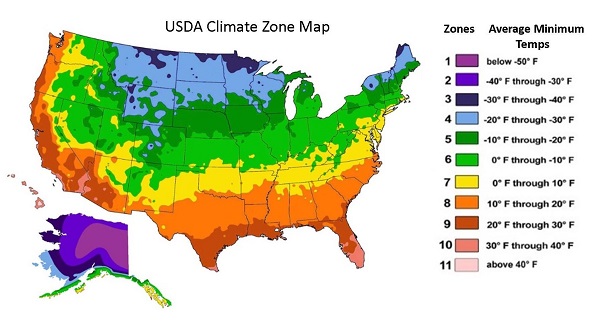
If you are living in the U.S. use your climate zone as a guide to succulents and plants in general that will survive your winters. You can still get good value out of the USDA climate zone chart, even if you don’t live in the United States. Climate zones are based upon the average coldest winter temperature in a geographic region, with lower numbers corresponding to colder climates. If you live where winters typically get down to 0° to 10°F ( -17° to -12°C), then you are in a climate zone 7. Use the image above to determine what climate zone is appropriate for your garden.
A plant’s winter hardiness is usually given as a range of climate zones. For instance, Agave ‘Queen Victoria’ is hardy to zones 7-9, while Sempervivum ‘Desert Bloom’ is hardy zones 5-10. Every number zone in the range is where that plant will survive the winter. The agave is hardy in zones 7, 8 and 9. The sempervivum thrives in zones 5, 6, 7, 8, 9 and 10. So if you garden in zone 7, either plant would do well for you. But a zone 6 gardener would have to bring the agave indoors for the winter. The fact that the agave is not hardy to zone 10 indicates that it actually needs more winter chill in order to thrive than such a mild climate would afford.
Acclimate Winter Succulents to Cold Naturally
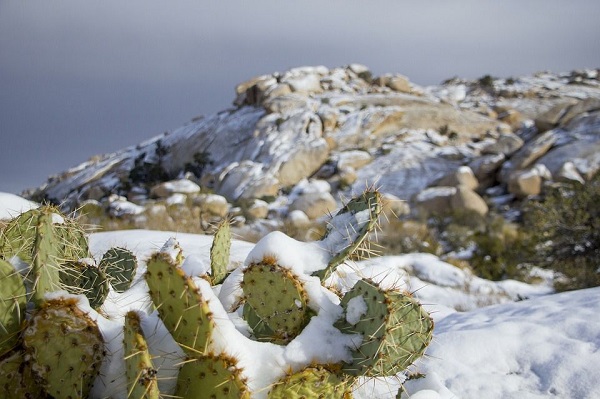
Winter succulents and all cold hardy plants build up their cryoprotectants gradually as the weather slowly cools. It is part of the plant’s natural response to stress. If you find you have been sheltering a cold hardy succulent indoors, do not remedy this by shoving it outside during a snow storm! While indoors, it will not have produced any cryoprotectants. Instead, continue to protect it indoors to finish the winter. Then, come spring, set it outside and allow it to acclimate naturally. Leave it outdoors for the coming winter, so that it experiences the full range of weather for which it has evolved. That way, the plant will fully develop the cryoprotectants it needs to survive the winter.
Winter Hardy Succulents Care
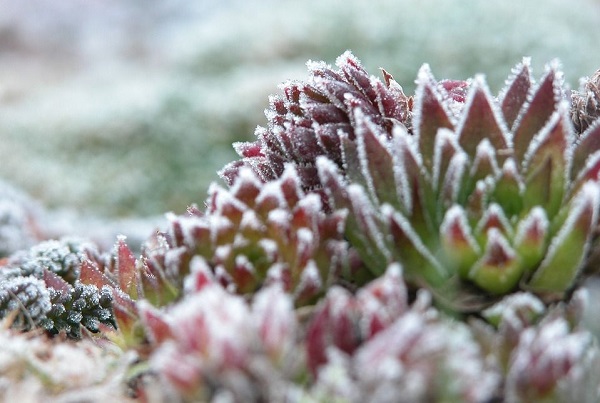
Remember that just because a succulent is rated as hardy in your climate, it won’t necessarily survive. First, your climate zone is based on average winter lows in the area. An unusually cold winter may kill a plant that normally would survive the typical winter. Second, winter hardiness refers to a plant growing in the ground. A potted plant will experience a full zone colder in winter than will a plant in the ground right next to it. Well-insulated by the surrounding earth, a plant’s roots growing in the ground have much more protection from the cold. Move potted plants off of walls, down to the ground. And move them close to the side of the house to ride out the winter. Check out this post by DroughtSmartPlants.com about preparing your succulent containers for winter.
Because many succulents go dormant for the winter, and because winter is often accompanied by rain and snow, you will water your winter succulents far less often in winter than in summer.
Watch for signs of animal predation during the winter. Deer, rabbits, squirrels and more are far more stressed in winter and may feast on succulents they typically ignore.
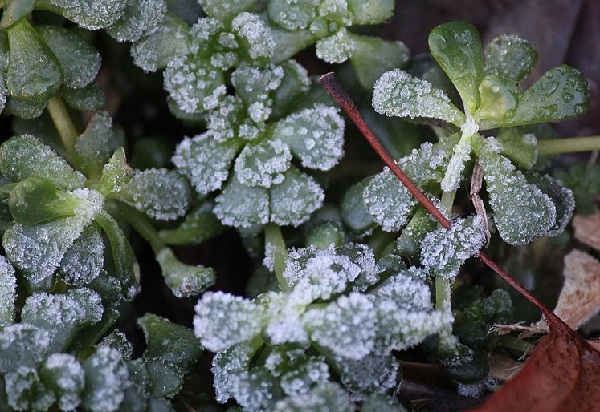
Now that you know about winter hardy succulents, I am sure you want to know which ones will thrive in cold climates. Check out sempervivum and sedum for the best-known winter succulents. Check out my top 10 winter hardy succulents!
Happy gardening!

P.S. Please be sure to subscribe to The Succulent Eclectic for more succulent care, tips and DIYs! You will receive my FREE course, 7 Steps to Succulent Success. Thanks!
